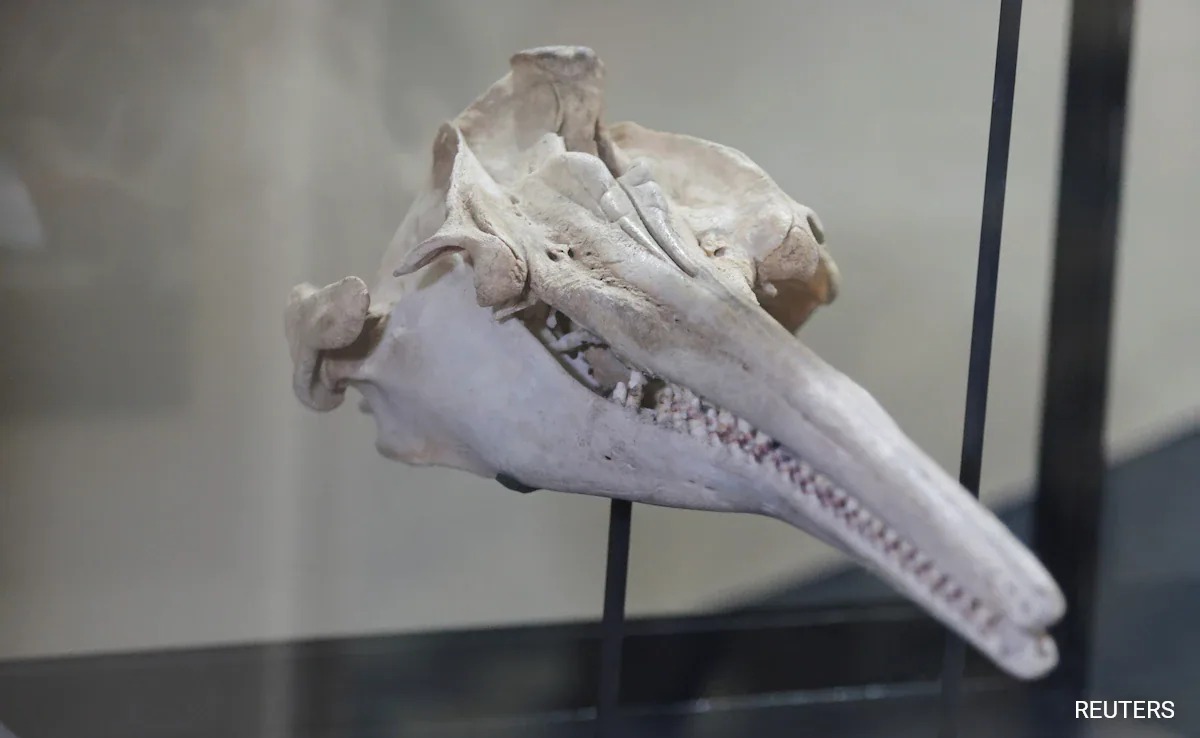On Wednesday, scientists revealed the discovery of a Dolphin Fossil dating back 16 million years, found in Peru, belonging to a river dolphin species that inhabited what is now the Amazon River. This dolphin’s closest living relative is the South Asian river dolphin, found in India’s Ganges River.
Paleontologist Rodolfo Salas said the skull belonged to the largest dolphin known to have inhabited the waters of South America, measuring 3 to 3.5 meters long (9.8 to 11.4 feet). It was named Pebanista yacuruna after the Yacuruna, a Peruvian mythological being that lived in deep water.
Read Also : SWAYAM January 2024 semester exam rescheduled due to Lok Sabha Elections
Peru Fossil Reveals Ancient Giant Relative of India’s Ganges River Dolphin
“This dolphin is related to the dolphin of the Ganges river in India,” Salas said, adding the one found in Peru is much bigger than its living relatives in Asia.
The ancestors of both dolphins formerly lived in the ocean, Salas said.
“This allowed them to occupy large ocean spaces near the coasts of India and South America. These animals lived in the freshwater environments both in the Amazon and India. Sadly, they became extinct in the Amazon, but in India they survived,” Salas added.
Read Also : US Secretary of Defence America Emphasised Support for Ukraine
Ancient Fossil Found in Peru: Study Published in Science Advances
The study was published in the journal Science Advances. Scientists found the fossil during a 2018 expedition sponsored by the National Geographic Society at the Napo River. The Amazon and Orinoco river basins still are home to a species known as the Amazon river dolphin, also called the pink river dolphin or boto.
Read Also : Sidharth Malhotra Film Yodha Box Office Collection ₹ 23 Crore

